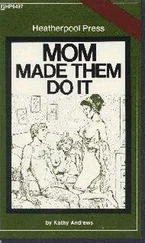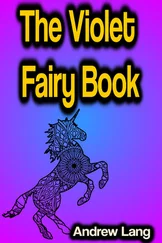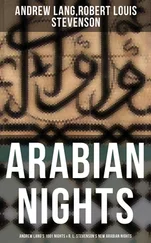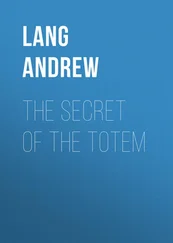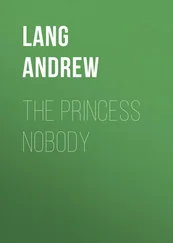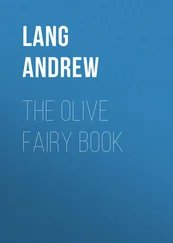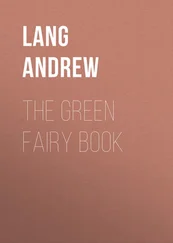Andrew Lang - Method in the Study of Totemism
Здесь есть возможность читать онлайн «Andrew Lang - Method in the Study of Totemism» — ознакомительный отрывок электронной книги совершенно бесплатно, а после прочтения отрывка купить полную версию. В некоторых случаях можно слушать аудио, скачать через торрент в формате fb2 и присутствует краткое содержание. Жанр: foreign_antique, foreign_prose, на английском языке. Описание произведения, (предисловие) а так же отзывы посетителей доступны на портале библиотеки ЛибКат.
- Название:Method in the Study of Totemism
- Автор:
- Жанр:
- Год:неизвестен
- ISBN:нет данных
- Рейтинг книги:4 / 5. Голосов: 1
-
Избранное:Добавить в избранное
- Отзывы:
-
Ваша оценка:
- 80
- 1
- 2
- 3
- 4
- 5
Method in the Study of Totemism: краткое содержание, описание и аннотация
Предлагаем к чтению аннотацию, описание, краткое содержание или предисловие (зависит от того, что написал сам автор книги «Method in the Study of Totemism»). Если вы не нашли необходимую информацию о книге — напишите в комментариях, мы постараемся отыскать её.
Method in the Study of Totemism — читать онлайн ознакомительный отрывок
Ниже представлен текст книги, разбитый по страницам. Система сохранения места последней прочитанной страницы, позволяет с удобством читать онлайн бесплатно книгу «Method in the Study of Totemism», без необходимости каждый раз заново искать на чём Вы остановились. Поставьте закладку, и сможете в любой момент перейти на страницу, на которой закончили чтение.
Интервал:
Закладка:
Now, looking at the five symptoms of totemism, I may repeat (speaking only for myself) that, as to 1 and 2, I think the exogamous clan , with " a clan name derived from the totem " is an institution of such very wide diffusion that I may blamelessly study it and attempt to account to myself for its existence. But this does not mean that I regard all exogamous social sets as at present totemic; or as always having borne totem names. Again, sets of people (I cannot call them "clans," for the word "clan" indicates persons claiming common descent from a male ancestor, – say Clan Gihean, Clan Diarmaid ), may bear animal or vegetable or other such names, yet not be at present, as such, exogamous. Of these are the Arunta, and the Narran-ga.
3. A religious attitude towards the totem . One cannot discuss this without a definition of religion. "Totemism is not a religion," says Mr. Frazer, with whom I am here in agreement.
4. Totemic taboos . These, though extremely general, are not quite universal even in Australia.
5. A belief in descent from the totem .
This belief is post-totemic, being merely one of many aetiological myths by which men explain to themselves why they are totemists; what is the nature of the rapport between them and their totems; why they bear as a kin (or association) animal or vegetable names. One or another such myth is not an essential part of totemism, for it is, necessarily, post-totemic.
I am thus left confronting the problems, (1) why are the immense majority of exogamous kins, in societies which we call "totemic," named by animal and other such names; and (2) why are they exogamous?
As for other exogamous social sets, which bear, not animal names, but territorial, or descriptive names, or nicknames, often derisive, it is my business to show, if I can, that these sets, or some of them, have passed, in historical times, out of the stage of totem-kins, owing to circumstances which I shall describe. Next (2) I have to show, if I can, why a few sets of people, bearing, as sets or associations, animal or other such names, are now no longer exogamous .
If I succeed, I think that I may regard "Totemism" as characterised by exogamous kins bearing totemic names, and as "an integral phenomenon" existing in many various forms. 7 7 But I exclude from my treatment of the subject, the "Matrimonial Classes," or "sub-classes" of many Australian tribes, for these are peculiar to Australia, appear to be results of deliberate conscious enactment, and, though they bear animal names (when their names can be translated), have no traceable connection with totemism.
If I understand Mr. Goldenweizer this attitude and effort of mine must seem to him "methodologically" erroneous, and "logically unjustifiable." "This attitude," he says (namely the attitude of those who hold totemism to be "an integral phenomenon"), "is reflected in the way several authors deal with the so-called 'survivals' of totemism, where from the presence in some region of one or two of the 'symptoms' of totemism, or of the fragments of such symptoms, they infer the existence in the past of totemism in its 'typical form,' that is, with all its essential characteristics." 8 8 J. A. F. p. 182.
Thus, for example, from such phenomena as standards bearing animal forms; or from animal worship, – each animal being adored in its own district, – or from myths of descent from gods in the form of animals; or from the animal names of some Roman gentes ; or from animals closely associated with gods (like the Shrew Mouse with Sminthian Apollo); or from the presence of beings partly theriomorphic partly anthropomorphic, in art, many writers infer a past of totemism in Italy; Israel; Greece Hellenic and Greece Minoan; in Egypt; in Ireland; and so forth. It is not my purpose to treat of such so-called survivals. I am to deal with peoples such as the tribes of Australia, New Guinea, and North-West America, who, if not the rose, have been near the rose: if not always totemic are at least neighbours of totemists.
III
Mr. Goldenweizer tabulates the results of his comparison between the Totemism of British Columbia and that of Central Australia. 9 9 J. A. F. p. 229. I give the tabular form in this note: TOTEMISM IN BRITISH COLUMBIA AND CENTRAL AUSTRALIA
In the latter region the totemic institutions and myths are not those of South-Eastern Australia. To the totemism of many tribes in South-Eastern Australia that of a great tribe of British Columbia, the Tlingit, bears, – if we may trust some of the evidence, – the closest possible resemblance; while, if we trust other and conflicting evidence, the resemblance is, on an important point, nearer to the institutions of certain Australian tribes of the furthest south, in Cape Yorke peninsula. The evidence for British Columbian totemism, I shall show, is so wavering as to make criticism difficult. The terminology, too, of some American students has been extremely perplexing. I am sorry to be obliged to dwell on this point, but a terminology which seems to apply five or six separate terms to the same social unit needs reform.
Dr. Boas is one of the most energetic field-anthropologists of the United States. To him we owe sixteen separate disquisitions and reports on the natives of the North-West Pacific coast and Hinterland , all of them cited by Mr. Goldenweizer in his excellent Bibliography. But Mr. Frazer observes that Dr. Boas variously denominates the kindred groups of the Kwakiutl tribe as "groups," "clans," "gentes," and "families." I must add that he also uses gentes as a synonym for phratries – "Phratries, viz. gentes ." 10 10 Franz Boas, Fifth Report of the Committee on the North-Western Tribes of Canada , p. 32, cited in Totemism and Exogamy , vol. iii. p. 319, note 2; cf. p. 321.
Now a "phratry" is not a gens ; a "group" may be anything you please; a "family" is not a gens ; – a " gens " is an aggregate of families, – and a "clan" is not a "family."
Mr. Goldenweizer's tabulated form of his comparisons between British Columbia and Australia contains ten categories (see the last footnote of p. 6). Of these, two at least (8) (9) indicate elements which are purely proofs that the B.C. tribes are on a much higher, or later, level of social progress than the Australians. These two are Rank and Art . Had Mr. Goldenweizer added Wealth and Towns to his ten categories he would have given four factors in B.C. culture which affect B.C. totemism, and which do not exist in Central Australia, where realistic art is all but wholly unknown: art being occupied with archaic conventional patterns. Thus, in Australia, the bewildering B.C. heraldry – the "crests" – cannot, as in B.C., confuse the statements of observers, perplex their terminology (for they often use "crests" as synonyms of "totems"), and disorganise totemism itself. But we can find, not far from Australia, a parallel to this heraldry in New Guinea. For "crests" or badges in Central British New Guinea, see Totemism and Exogamy , vol. ii. pp. 42-44. The people, like the B.C. tribes, are settled in villages. They have "a number of exogamous clans," most clans occupying several villages, and they have paternal descent. "Every clan" (as apparently in some cases in British Columbia) "has a number of badges called Oaoa, which, generally speaking, may only be worn or used by members of the clan." The "clan" names are geographical or are patronymics, they are not totemic; the badges either represent birds and mammals, or are "schematised" from some prominent feature of these. The people are not now totemists, even if they have passed through totemism.
Читать дальшеИнтервал:
Закладка:
Похожие книги на «Method in the Study of Totemism»
Представляем Вашему вниманию похожие книги на «Method in the Study of Totemism» списком для выбора. Мы отобрали схожую по названию и смыслу литературу в надежде предоставить читателям больше вариантов отыскать новые, интересные, ещё непрочитанные произведения.
Обсуждение, отзывы о книге «Method in the Study of Totemism» и просто собственные мнения читателей. Оставьте ваши комментарии, напишите, что Вы думаете о произведении, его смысле или главных героях. Укажите что конкретно понравилось, а что нет, и почему Вы так считаете.

